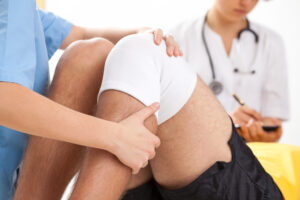Joint Pain Doctors New Jersey
 Osteoarthritis is sometimes called wear and tear arthritis and is the most common type of arthritis. There is a smooth cushion between bones, the cartilage, and when that cushion breaks down then the joints can be swollen, hard to move and hurt.
Osteoarthritis is sometimes called wear and tear arthritis and is the most common type of arthritis. There is a smooth cushion between bones, the cartilage, and when that cushion breaks down then the joints can be swollen, hard to move and hurt.
This type of arthritis can affect any joint, but is most commonly seen in the hands, hips, lower back, neck and knees. It can happen at any age, but often starts around the age of fifty and affects more women than men. This disease is gradual and worsens over time. Not everyone will get OA, because you can prevent and minimize your chances and the pain from this disease by keeping mobile.
Causes of Osteoarthritis
Osteoarthritis was once believed to be caused by the use of the joints over time wearing the cartilage thin. However, scientists believe that it is now a disease of the joint.
Some things that may cause osteoarthritis are:
- Age, always a risk factor. The older you get, the more likely you may develop OA because your muscles and joints are also aging.
- Joint injuries are another risk. Breaking or tearing joints can cause OA years later.
- Overuse is another common cause. When you use the same joints over and over in the same way, it can lead to OA.
- Obesity causes extra weight to go on the joints, and fat cells promote inflammation.
- Weak muscles can cause joints to get out of the right position because there isn’t enough support.
- Genetics always play into diseases like this. If you have a family with OA, then you’re more likely to get OA.
- Sex is a factor because OA affects more women than men and is more likely in women.
If you have a diagnosis of OA, you should reach out to joint pain doctors in New Jersey who are prepared to help with your pain management.
Symptoms
Symptoms of osteoarthritis can build up over time and do not often show up suddenly. Some of these symptoms are:
- Pain or aching in the affected joint during an activity, or after a long bout of activity.
- Joint stiffness that occurs first thing in the morning or after resting the joint for a period of time.
- Limited range of motion that can be fixed by moving the body part.
- Clicking or cracking sounds when the joint bends.
- Swelling around the joint.
- Muscle weakness around the joint.
- Joint instability or buckling.
Here are ways that OA may affect the different parts of the body:
- Your hips may hurt, you may feel pain in the groin or buttocks and sometimes on the inside of the knee or thigh.
- Knees will grate or scrape when moved.
- Fingers will become swollen, tender, and red. You may have bony growths such as spurs start growing on the edge of joints.
- Feet will start hurting, the ankles or toes may swell, and the big toe may be painful and tender.
As OA gets worse, cartilage may get uneven edges and cracks. Bones can harden and change shape, they can even be bumpy. When cartilage breaks down, it will not grow back on its own.
Reach out to osteoarthritis physicians in New Jersey, such as the ones available at Northeast Spine & Wellness Center.
